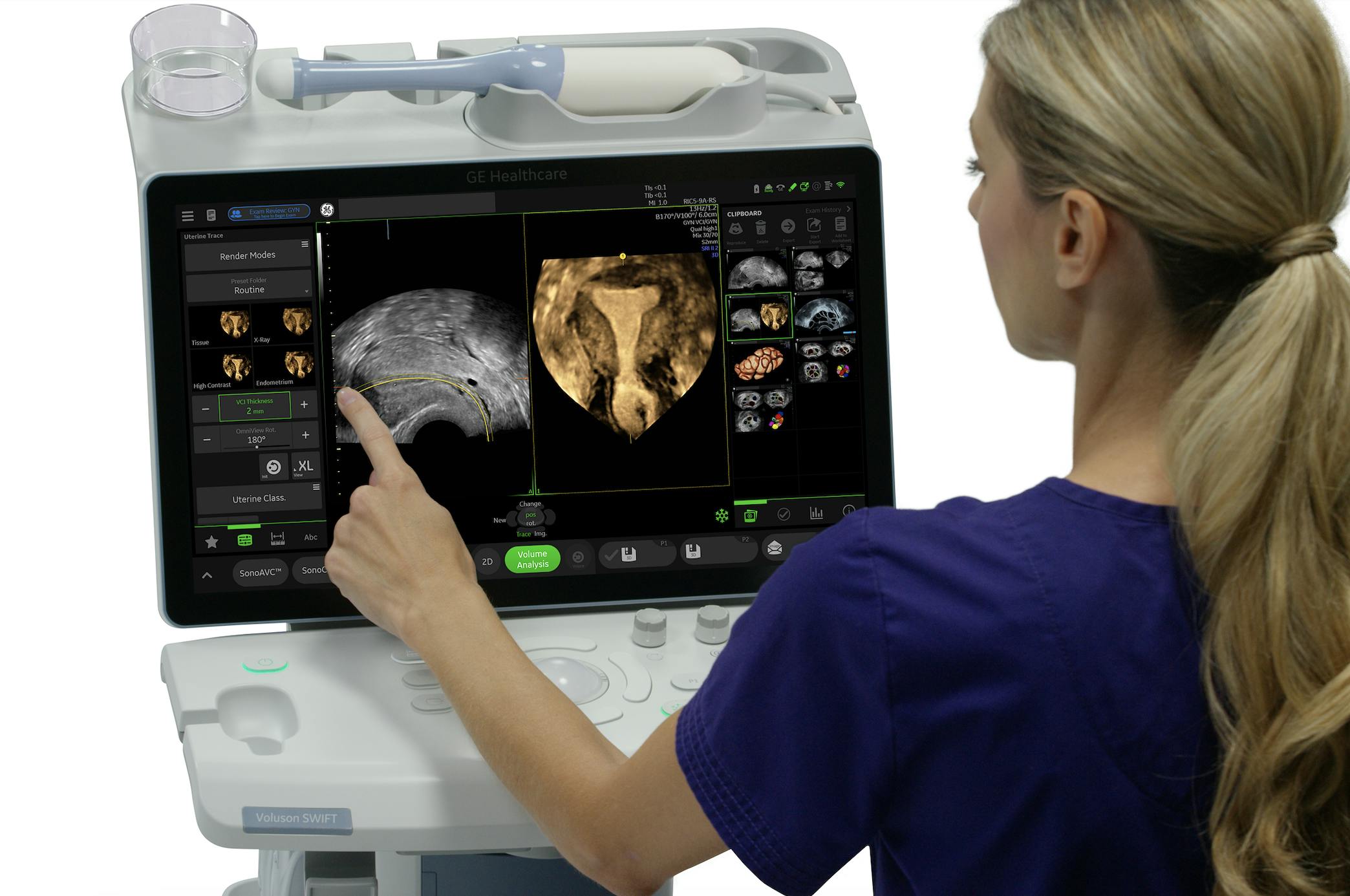Medical ultrasound allows OB/GYN practices to diagnose a broad range of female reproductive abnormalities. This collection of FAQs reveals how ultrasound scanning techniques can ensure accurate diagnosis and treatment.
Diagnostic medical ultrasound is a widely available imaging modality that can provide valuable insights for a broad range of female reproductive abnormalities and pathologies. This FAQ will answer questions about ultrasound scanning techniques and help you learn strategies to ensure the accuracy and clarity of this data.
- What is ultrasound's role in the long-term success of adenomyosis treatment? Ultrasound's role in adenomyosis treatment lies in its dual capacity: diagnosing the condition accurately and guiding interventions for successful treatment outcomes. Through accurate live imaging, healthcare providers can use ultrasound to identify adenomyosis, monitor treatment progress, and guide minimally invasive procedures. This radiation-free, real-time imaging method ensures precise identification, targeted treatment, optimal therapeutic outcomes, and continual assessment, contributing significantly to the long-term effectiveness of adenomyosis management.
- What are the key factors in acquiring an accurate 3D ultrasound volume? Achieving an accurate 3D ultrasound volume hinges on several factors: consistent transducer positioning, patient anatomy stability, and operator skill. Precise probe placement ensures comprehensive coverage and minimizes artifacts. Patient factors like body movement can impede image clarity, so maintaining stillness is crucial. Operator expertise in adjusting settings, such as speckle reduction imaging (SRI), optimizes image quality by reducing noise. Another key factor in obtaining accurate 3D ultrasound volume is operator utilization of the appropriate 3D volume display of the scan data (multiplanar reconstruction versus tomographic imaging) to identify the relevant imaging needed for the organ of interest and suspected pathology. Together, these factors ensure accurate capture of 3D ultrasound volume.
- How can healthcare providers identify deep infiltrating endometriosis lesions with ultrasound? Identifying deep infiltrating endometriosis (DIE) via ultrasound requires meticulous evaluation. Lesions often manifest as hypoechoic masses attached to pelvic structures, most commonly the rectum and rectosigmoid colon. These masses can alter their architecture. The "sliding sign" evaluated with transducer pressure assesses mobility between affected tissues, aiding in identification. Doppler imaging can detect vascularization within lesions. Skillful transducer manipulation and exploring various angles can unveil hidden lesions. Recognizing characteristic features like the "tenderness sign" (pain upon contact) further assists in pinpointing suspect areas. Comprehensive knowledge, coupled with thorough examination techniques, enables accurate identification of deep infiltrating endometriosis lesions via ultrasound.
- How do you perform an umbilical artery Doppler assessment with ultrasound? Performing an umbilical artery Doppler assessment involves locating a segment of free-floating umbilical cord at a time when fetal movement is minimal. Multiple samples must be taken from a consistent sample site, and the final ratios must be averaged together, both of which reduce the influence of fetal and maternal influences. The International Society of Ultrasound in Obstetrics and Gynecology (ISUOG) recommends the use of both color and spectral Doppler; monitoring of both thermal and mechanical indices; display of the complete Doppler waveform; and system calculation of pulsatility index (PI), resistive index (RI), and systolic/diastolic ratio (S/D) numbers. Doppler waveforms aid in assessing placental vascular resistance and potential fetal distress.
- How do you identify placenta previa on ultrasound? Detecting placenta previa via ultrasound involves assessing the placental location in relation to the maternal cervix. Visualization of the lower uterine segment and cervix is best performed with a transvaginal approach after 20 weeks gestational age and confirmed again at 32 weeks. Placenta previa is confirmed if the placenta partially or completely covers the internal os of the cervix. Diligent scanning, differentiation between low-lying placenta and placenta previa, follow-up confirmation, and consideration of maternal history contribute to accurate ultrasound identification of this condition.
- How is ultrasound utilized in the diagnosis of fetal congenital heart disease? Ultrasound is pivotal in diagnosing fetal congenital heart disease by providing a detailed assessment of cardiac anatomy and function. High-resolution imaging and color Doppler capture detailed data on cardiac structures, identifying anomalies in the chambers, valves, and adjacent vessels. Advanced techniques like 3D imaging enhance visualization and aid in the early detection of fetal cardiac conditions. Skilled interpretation of these images, combined with comprehensive fetal assessment, enables accurate diagnosis and allows for early management strategies for prenatal and postpartum needs.
Use the ultrasound guide provided in these FAQs to improve your knowledge of ultrasound scanning techniques. Female reproductive abnormalities can be complex and varied. However, understanding the innovative ultrasound technology available will ensure that accurate diagnosis and effective treatments will improve the lives of female patients everywhere.





